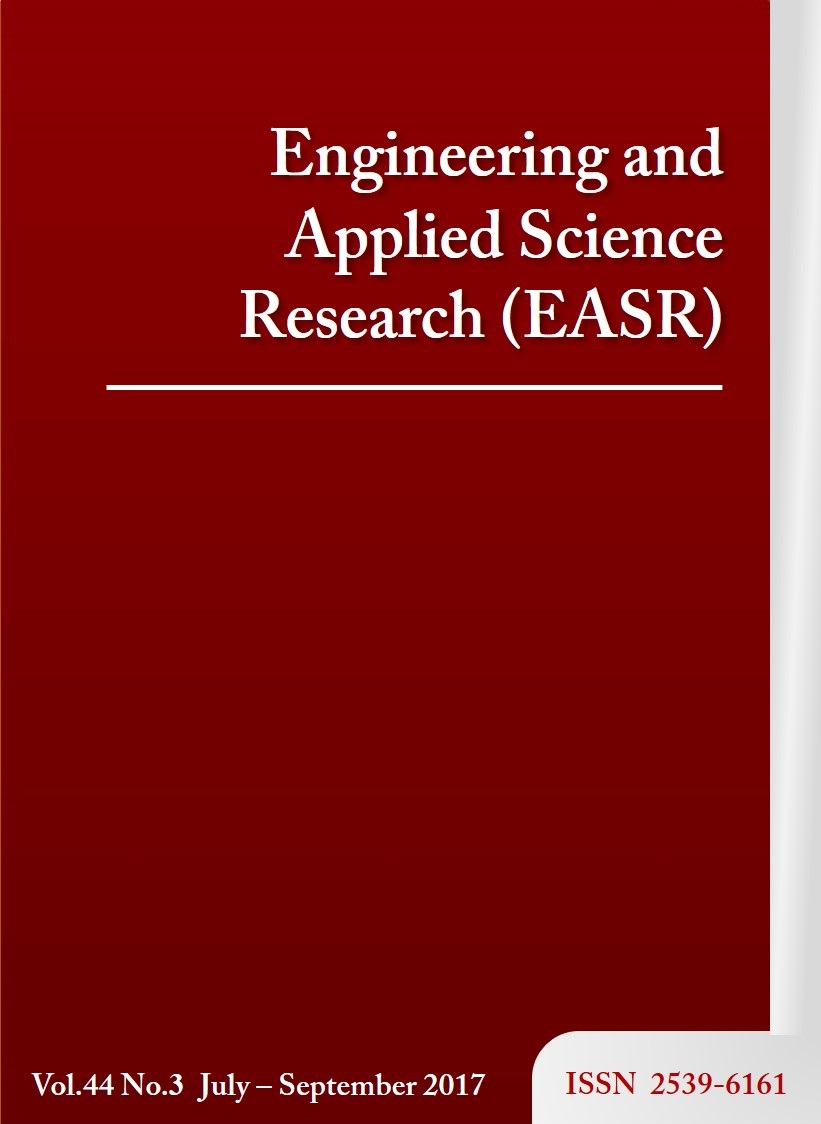Physical and chemical characterization of hydrolyzed Napier grass waste for biomass pellets
Main Article Content
Abstract
Utilizing agricultural waste for energy and to conserve the environment has been an active research area recently. In this study, Napier grass waste resulting from its hydrolysis with acids was pelletized and its use was studied as a biomass fuel. An investigation of its physical characteristics, including pellet dimensions and weight, was performed at a laboratory scale. Flat-faced pellets were obtained with enhanced stability necessary for transportation. Chemical characterization of the hydrolyzed waste included determination of its nitrogen, chloride and sulfur content. These values were marginal. After pelletization, experimental determination of its heating values, moisture content and density was examined. It was found that these values exceeded the European standard for biomass pellets. The average of heating value of pelletized biomass was greater than 3500 cal/g. Therefore, a binding material was not necessary. Overall, the investigation revealed that the pellets produced from hydrolyzed Napier grass waste could potentially be exploited as an alternative energy source after some residual chemicals were removed.
Article Details
This work is licensed under a Creative Commons Attribution-NonCommercial-NoDerivatives 4.0 International License.
References
Lewandowski I, Scurlock JMO, Lindvall E, Christou M. The development and current status of perennial rhizomatous grasses as energy crops in the US and Europe. Biomass Bioenerg. 2003;25(4):335- 61.
Magcale-Macandog DB, Predo CD, Menz KM, Predo AD. Napier grass strips and livestock: a bioeconomic analysis. Agroforest Syst. 1998;40(1):41-58.
Takata E, Tsutsumi K, Tsutsumi Y, Tabata K. Production of monosaccharides from Napier grass by hydrothermal process with phosphoric acid. Bioresour Technol. 2013;143:53-8.
Aguilar R, Ramı́rez JA, Garrote G, Vázquez M. Kinetic study of the acid hydrolysis of sugar cane bagasse. J Food Eng. 2002;55(4): 309-18.
Sarkar N, Aikat K. Kinetic study of acid hydrolysis of rice straw. ISRN Biotechnol. 2013;2013:1-5.
Tanangteerapong D, Tunjaroensin T, Trakun-ung P, Kamwilaisak K. Production of reducing sugars from hydrolysis of Napier grass by acid and alkaline. CMU J Nat Sci 2016;16(1):31-6.
Obernberger I, Thek G. Physical characterisation and chemical composition of densified biomass fuels with regard to their combustion behaviour. Biomass Bioenerg. 2004;27(6):653-69.
Hameed S. Dignon J. Changes in the geographical distributions of global emissions of NOx and SOx from fossil-fuel combustion between 1966 and 1980. Atmos Environ. 1967;22(3):441-9.
ASTM International. ASTMD3172-73 (Reapproved 1984). Standards method of proximate analysis of coal and coke gaseous fuels; coal and coke; annual book of ASTM standards. West Conshohocken: ASTM International; 1989.
European Committee for Standardization. EN14961-1: 2010. Solid biofuels - fuel specification and classes, part 1 - general requirements. Brussels: European Committee for Standardization; 2010.
Demirbaş A, Şahin A. Evaluation of biomass residue: 1. Briquetting waste paper and wheat straw mixtures. Fuel Process Tech. 1998;55(2):175-83.
Jenkins BM, Baxter LL, Miles Jr TR, Miles TR. Combustion properties of biomass. Fuel Process Tech.
;54(1–3):17-46.
Spliethoff H, Hein KRG. (1998). Effect of co-combustion of biomass on emissions in pulverized fuel furnaces. Fuel Process Tech. 1998;54(1-3):189-205.
Shaub WM. (1982). Procedure for estimating the heats of formation of aromatic compounds: chlorinated benzenes, phenols and dioxins. Thermochim Acta. 1982;55(1):59-73.
Fernando S, Hall C, Jha S. NOx reduction from biodiesel fuels. Energ Fuel. 2006;20(1):376-82.
Mohammed IY, Abakr YA, Kazi FK, Yusup S, Alshareef I, Chin SA. Comprehensive characterization of Napier grass as a feedstock for thermochemical conversion. Energies. 2015;8(5):3403-17.



